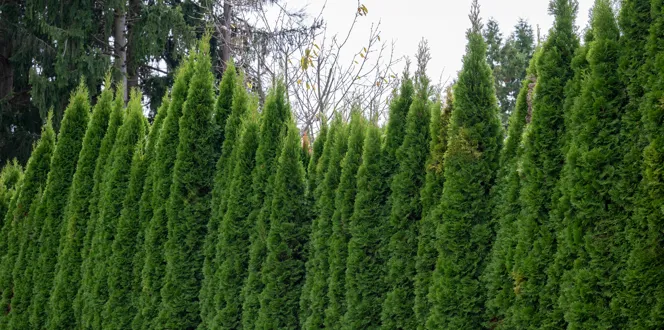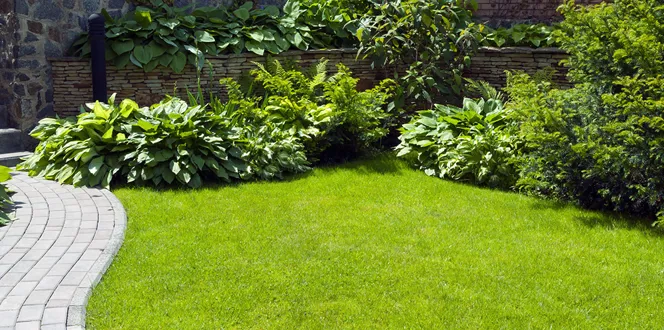Keeping up with all of your lawn’s needs throughout the year is not always easy.
You want to do what’s best for your home lawn, but you can get pretty busy with summer vacation plans and outdoor adventures.
By the time you realize you should’ve done something, you could already be seeing weeds or bare spots. This can make you wonder if you should have done something weeks ago to prevent the issues you’re seeing today. For instance, when was the last time you fertilized? And how fast can you get rid of these weeds or could you have done something to prevent them?
Having a seasonal lawn care guide can help ensure you don’t forget anything essential when it comes to having a great lawn all year long.
Your lawn is the first thing anyone sees visiting your home, so let’s make sure it stays in good shape. Follow this lawn care season guide so you know what your lawn needs and when it needs it to ensure nothing is forgotten. While these tips are dependent on your specific climate conditions and grass type, they are general enough to give you some good guidance as you tend to your grass.
Spring Lawn Care
Our spring lawn care tips begin early in the year – March, in most regions.
Once winter fades away, you want to start by cleaning up your yard. Lightly rake up dead leaves and debris leftover from winter. Don’t be aggressive and pull out chunks of lawn; you just want to clear the lawn so it can receive air, sunlight, water, and nutrients to grow. Check for bare spots or snow mold, salt, or snow plow damage if you’re in an area that receives snow and ice accumulation. Flag these spots for repair and seeding later.
Next, prepare your mower by sharpening mower blades, filling tires with air, changing the oil, and ensuring the machine works properly. As you get into late spring, you’ll begin mowing weekly to maintain a 3- to 4-inch grass height. Remember to never remove more than one-third of the grass at any one time to prevent adding unnecessary stress to your lawn.
By May, a second fertilizer application and preemergent herbicide application will continue providing your grass with nutrients and extend your crabgrass control. Using post emergence herbicides can knock down broadleaf weeds like dandelions that creep into your lawn.
Summer Lawn Care
Your summer lawn care guide will begin in June.
In summer, you’ll apply a third granular fertilization treatment and possibly a liquid post emergent herbicide application where necessary to tackle stubborn weeds. Also, if you have a lawn insect problem like grubs, a preventative insecticide application can stop them from becoming a problem in August and September.
While mowing will be busiest during spring and fall, it may begin slowing down during the hotter summer months. Usually, you’ll be mowing every five days in spring and fall and every 10 days in early spring, summer, and late fall. Avoid mowing in the heat of the day or during periods of extended drought.
Lawn watering becomes important in summer, too. Depending on your location, you may have received enough water from rain during the spring, but once summer settles in, water one to two times weekly for approximately 45 to 60 minutes. You want to provide a less frequent good soak versus a bunch of shallow waterings to ensure water reaches your lawn roots.
By August, you’ll have another granular fertilizer application to help prepare your lawn for fall growth, as well as any necessary post emergent weed control.
At this time, you’ll also want to start watching for any insect activity or damage from pests like chinch bugs.
Fall Lawn Care
In fall, which usually begins around September or October, a granular fertilizer application will ensure nutrients reach your lawn roots to help you grow thicker, greener grass.
Weed control during this cooler time can help control tougher, perennial weeds like wild violet and ground ivy. Round out your fall lawn care tips with aeration to break up the soil and help your lawn better receive air, water, and nutrients. Overseeding at this time is also a good option to fill in bare areas since aeration helps maximize the seed-to-soil contact, and the cooler temperatures help, too.
Winter Lawn Care
When it comes to winter lawn care tips, you might think you don’t have anything to do with your lawn, but that’s not necessarily true. As long as the ground isn’t frozen, there are some things you can do.
For instance, a winterize application may be helpful with grass root development to help store nutrients over the winter so they are available to your lawn in early spring. Depending on your region, this may also be a good time of year for another weed control treatment to continue battling any late-germinating, tough-to-control weeds that take multiple treatments to eliminate.





